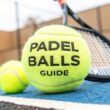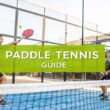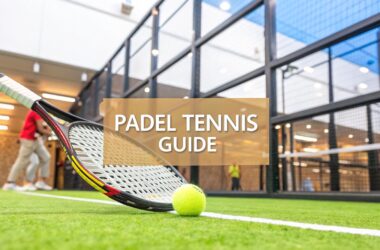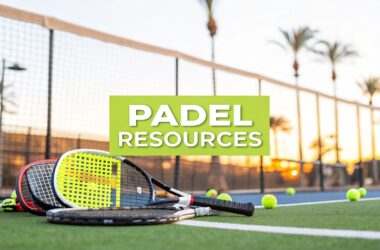If you've ever seen a sport that looks like a high-energy mix of tennis and squash, you were probably watching padel. It’s a dynamic racket sport played in doubles on a smaller, enclosed court, and its real charm is how easy it is to get started. Honestly, it’s remarkably simple for beginners to grab a racket and have a genuinely fun rally on their first try.
Unpacking the Padel Phenomenon
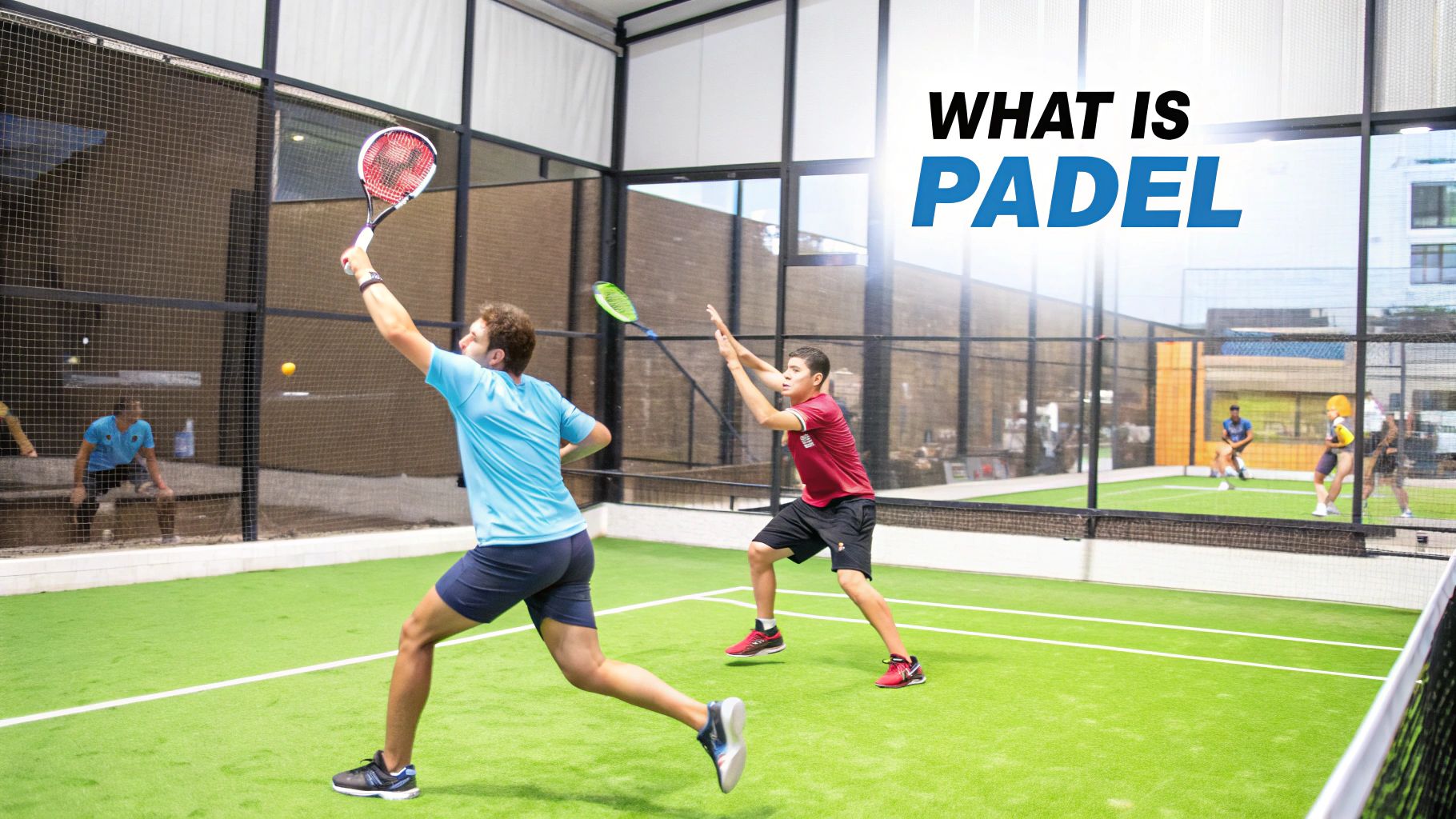
So, what’s the big deal about padel? Think of it less like a brute-force power game and more like a fast-paced game of chess where strategy, angles, and teamwork reign supreme. Unlike tennis, the court is surrounded by glass and mesh walls, and here’s the key: those walls are part of the game.
This single difference creates much longer and more exciting rallies. A shot that looks like a surefire winner flying past you can actually be played off the back glass, instantly turning a desperate defensive move into a clever attack. It's this perfect blend of tactical thinking and beginner-friendly mechanics that is fueling its incredible global growth.
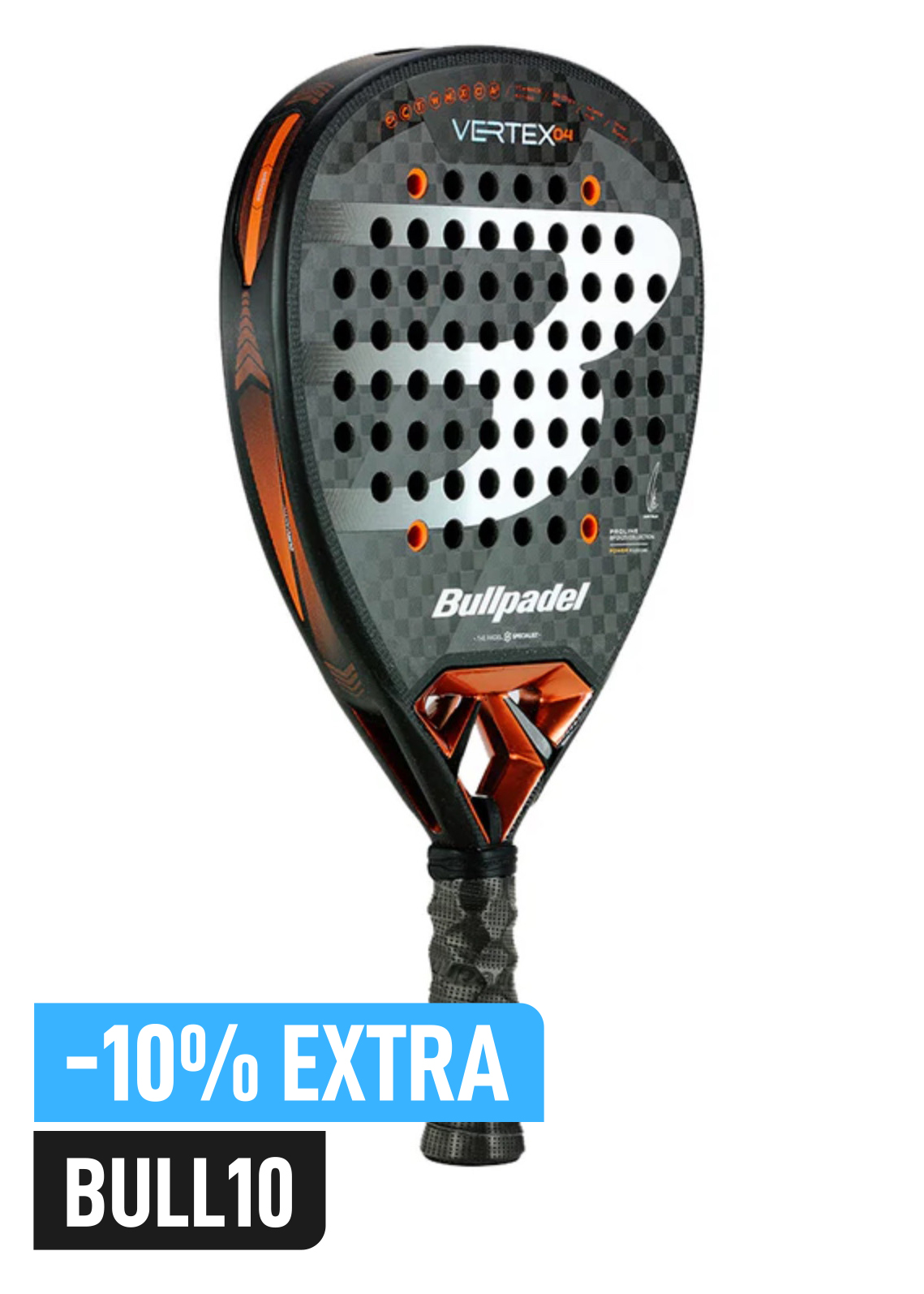
Buy the best padel gear to level up your next game!
CHECK OUT this deal from Padel Market!Get ready to take your game to the next level with the latest padel gear from Padel Market! Fast EU and Worldwide Shipping
Core Elements of the Game
Padel’s explosion in popularity isn't just a fleeting trend; it’s a worldwide movement built on a few core principles that make the game totally addictive.
- Social and Inclusive: Since it's always played in doubles, padel is naturally a team sport. It’s all about communication and working together, not just individual skill.
- Easy to Learn: The underhand serve and smaller court immediately lower the barrier to entry. New players can feel like they know what they’re doing almost right away.
- Strategic Gameplay: Winning in padel is more about outsmarting your opponents with clever shot placement and using the walls than it is about hitting the ball as hard as you can.
The growth numbers are staggering. Padel is now considered one of the fastest-growing sports globally, with over 25 million players in more than 90 countries.
You can see this boom everywhere you look. In Spain, a padel hotspot, there are now over 10,000 courts—which is more than the number of tennis courts! That really says something about where players are spending their time. For a deeper dive into these growth statistics, check out the data at WePadel.com.
Padel at a Glance
To give you a quick snapshot, the table below breaks down the basics of the game. It’s a great way to get your head around the key components before we jump into the rules and history.
| Element | Description |
|---|---|
| Players | Always played in doubles (two vs. two). |
| Court | 20×10 meters, enclosed by glass and mesh walls. |
| Racket | Solid, stringless "pala" with perforations. |
| Ball | Similar to a tennis ball but with lower pressure. |
| Serve | Must be hit underhand, below waist level. |
| Core Rule | Walls are in play, allowing for creative rebounds. |
This table covers the fundamentals, giving you a solid foundation for understanding what makes padel, well, padel.
The Surprising Story Behind Padel's Rise
Every great sport has an origin story, but padel’s tale is as unique as the game itself. It didn’t start in a fancy sports lab or a massive stadium. Instead, it began in the backyard of a creative businessman in Acapulco, Mexico.
The year was 1969, and Enrique Corcuera was tired of his tennis guests hitting balls over the fence and into his neighbor’s yard. It was a simple, common problem.
Frustrated but inspired, Corcuera decided to build a smaller, enclosed court. This wasn't just about keeping the ball in play—it was a stroke of genius that accidentally laid the foundation for a brand new sport.
From a Backyard Fix to a Global Game
Corcuera’s invention was a brilliant mashup, blending the familiar flow of tennis with the fast, wall-bouncing action of squash. In 1969, Mexican businessman Enrique Corcuera officially invented padel by building a court surrounded by solid walls and wire mesh.
This clever setup, originally called 'Paddle Corcuera,' didn't just solve his runaway ball problem. It created a completely new and ridiculously fun racket sport. You can dive deeper into this clever invention's history over at Padel & Tennis UK.
The game could have easily stayed a private hobby, but Corcuera had influential friends. One of them, Spanish Prince Alfonso de Hohenlohe, fell hard for the sport during a visit. He was so captivated that he built two of the first-ever official padel courts at his exclusive Marbella Club in Spain back in 1974.
This single move was the spark that ignited the European fire. What started as a clever solution for a private home in Mexico was now the star attraction at one of Spain’s most prestigious resorts, putting padel in front of a whole new international crowd.
The Spanish Connection Ignites a Phenomenon
From the sun-drenched courts of Marbella, the sport’s popularity exploded, spreading like wildfire across Spain and then to Argentina. Its magic was simple: it's social and incredibly easy to pick up.
Unlike tennis, which can demand years of practice to master power and technique, padel’s smaller court and forgiving walls let people of all ages and abilities jump right in and have a blast.
This journey from a smart backyard fix in Acapulco to the elite clubs of Spain turned a simple idea into a global phenomenon. It wasn't a slick marketing campaign that fueled its rise, but its undeniably fun and social core.
Your Guide to Padel Courts and Equipment
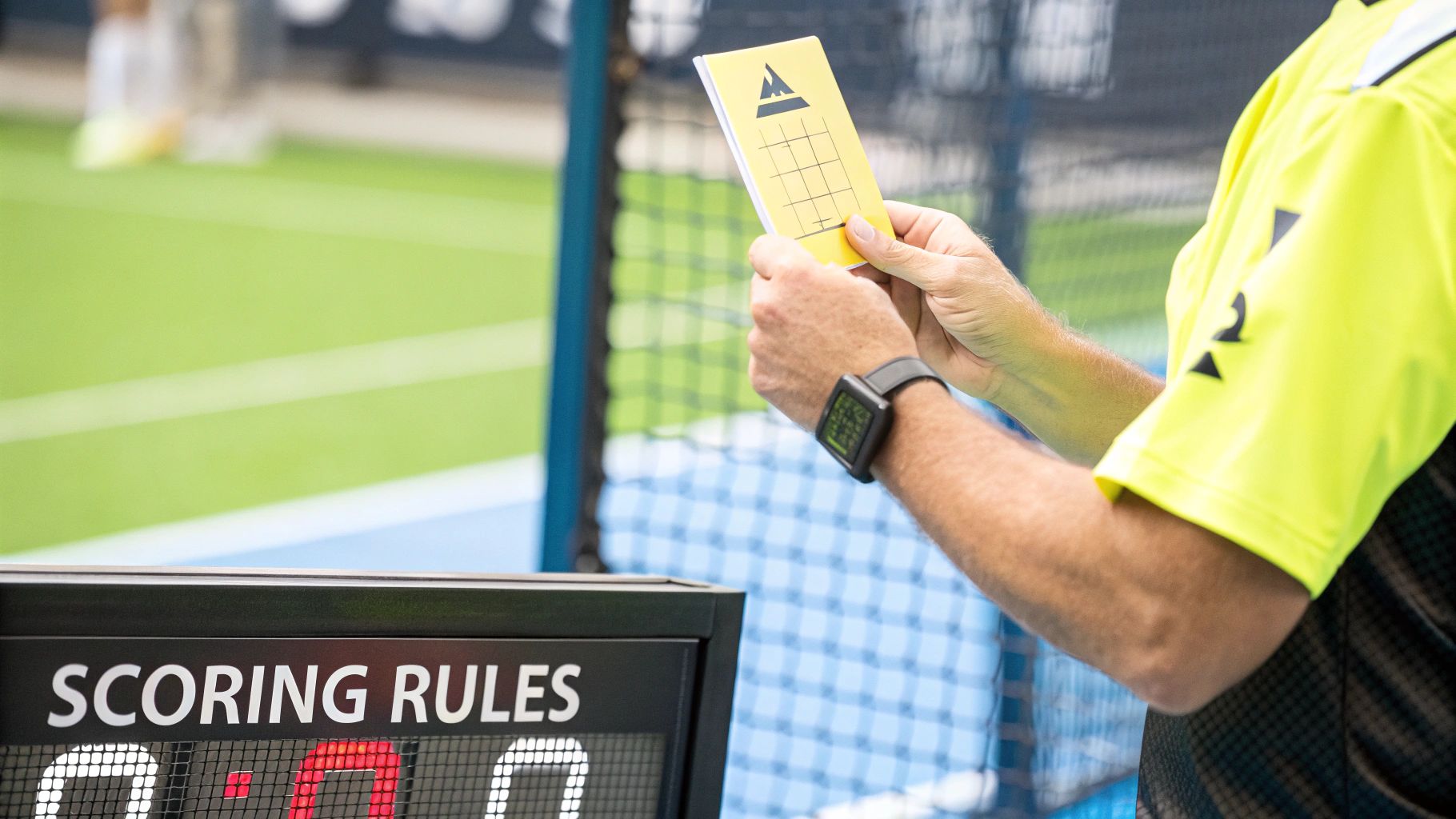

Buy the best padel gear to level up your next game!
CHECK OUT this deal from Padel Market!Get ready to take your game to the next level with the latest padel gear from Padel Market! Fast EU and Worldwide Shipping
Before you even think about stepping onto the court, it’s worth getting to know the unique environment and gear. Padel isn't just a sport with different rules; it has its own specialized equipment that is central to what makes it so strategic and, frankly, so welcoming for beginners.
Let's break down the three core components you'll be using every single game: the court, the racket, and the ball.
The first thing that hits you about a padel court is just how compact it feels. It’s an intimate, social arena, a far cry from a massive, sprawling tennis court.
This playing area is a rectangle measuring 20 meters long by 10 meters wide, enclosed by a mix of glass and wire mesh walls. And here’s the fun part: those walls aren't just there to keep the ball in. They are an active, exciting part of the game, letting you play strategic rebounds and clever angles. If you want to dive deeper into the nitty-gritty, check out this guide on what is a padel court.
The Padel Racket or Pala
Next up is your most important piece of gear: the racket, known in Spanish as the "pala." If you're coming from tennis, the padel racket will feel completely different in your hand. It's a solid, stringless paddle, usually made from composite materials like carbon fiber or fiberglass with a foam core inside.
You’ll notice the face is covered in holes, which help cut down on air resistance and give you a little more bite on your shots. Unlike the one-size-fits-all approach in other sports, padel rackets come in a few key shapes, each tailored to a specific style of play.
- Round Shape: These rackets have a big, forgiving sweet spot right in the middle, giving you maximum control. They're perfect for beginners who are just focused on getting the ball where they want it to go.
- Diamond Shape: With a sweet spot located higher up on the face, these rackets are all about power. They're a favorite among advanced players looking to hit aggressive, match-winning smashes.
- Teardrop Shape: This is your hybrid, the best of both worlds. It strikes a great balance between power and control, making it a versatile choice for intermediate players who like to mix defensive lobs with powerful volleys.
Your choice of racket really defines how you feel the game. Starting with a round racket is a great way to build a solid foundation of control. As your skills sharpen, you might find yourself graduating to a more power-focused diamond shape.
The Padel Ball
Finally, let's talk about the ball. At a quick glance, a padel ball looks almost exactly like a regular tennis ball. They’ve got that same fuzzy, yellow look we all know.
But there's a crucial difference inside that completely changes the game. Padel balls have less internal pressure than tennis balls. This might seem like a tiny detail, but it means they bounce lower and fly slower.
This gives you more time to react and get into position for your next shot. That slower pace is a massive reason why padel is so easy for beginners to pick up, leading to longer, more satisfying rallies right from your very first game.
How to Play Padel: Rules and Scoring Made Simple
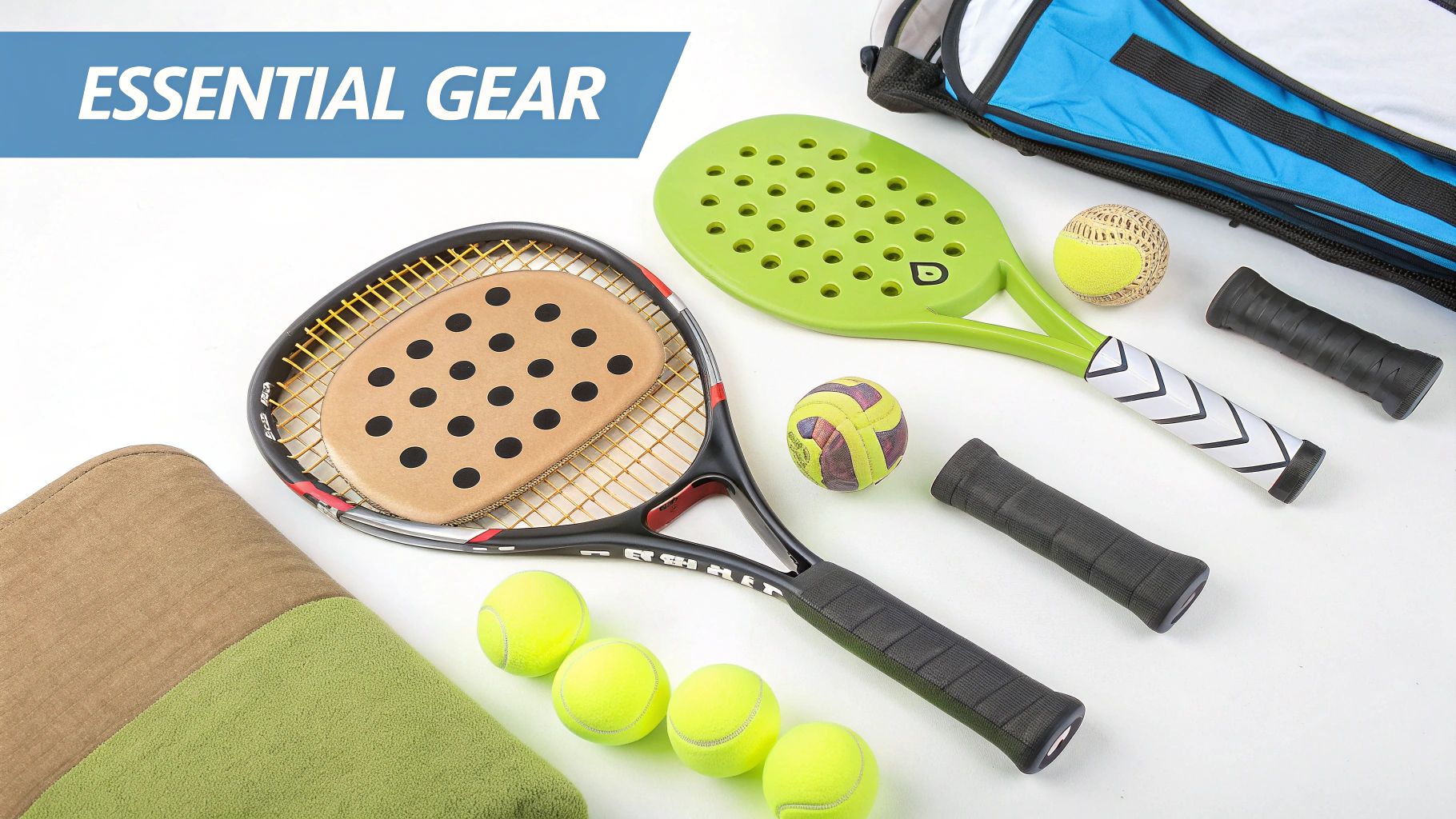
Ready to get into the game? Don't be intimidated—getting started with padel is way easier than you might think, especially if you’ve swung a racket before. The rules are designed to keep the ball in play, sparking long, exciting rallies and strategic points that make the game addictive from the very first hit.
Here's the best part for anyone coming from tennis: the scoring system is identical. You’re playing for points to win games, and games to win sets. It follows the classic 15, 30, 40 progression. If you and your opponents both hit 40, you’ve got a "deuce," and a team needs to win two points in a row to take the game.
The All-Important Padel Serve
Right away, you'll notice a huge difference from tennis: the serve. Forget about powerful, overhead smashes. The padel serve is a much more controlled, underhand motion. This one change makes a world of difference, shifting the focus from raw power to strategy right from the start.
Here's how you do it:
- Bounce First: You must let the ball bounce once on the ground behind the service line before hitting it.
- Hit Below the Waist: Your racket has to make contact with the ball at or below your waist.
- Serve Diagonally: Just like in tennis, you serve cross-court into your opponent's service box.
This underhand serve is simple to master and gets the ball in play reliably. It’s all about starting a fun rally, not blasting a high-speed ace past your opponent.
Understanding the Flow of a Rally
Once the serve is in, the real fun begins. This is where padel's most exciting rule comes into play—using the walls. Don't think of the walls as boundaries. Instead, see them as part of the court, like the cushions on a pool table that let you set up surprising new angles.
Here’s the key: during a rally, the ball has to bounce on your opponent's side of the court before it hits any of the walls. After that first bounce, it can legally rebound off any of the glass or mesh walls, and your opponent can play it back. You can even let the ball hit a wall on your own side before you return it.
This single rule is the heart and soul of padel strategy. A shot that looks like it's sailing out of bounds might just carom off the back glass and set you up perfectly for a return. It turns what would be a lost point in tennis into a clever, game-changing play.
When Is a Ball In or Out?
Once you get the hang of playing off the walls, figuring out when a point is over is pretty straightforward. A point ends when:
- The ball bounces twice on your side of the court.
- You hit the ball straight into the net.
- The ball hits an opponent's wall or fence before it bounces on the ground.
- The ball hits you or your partner.
Nailing these basics is your first step to unlocking the tactical fun of the sport. As you get more comfortable, you might want to dive deeper into the official regulations. Exploring more about the padel game can give you some valuable insights to help sharpen your skills.
Padel vs Tennis vs Squash: Unpacking the Differences
If you're coming to padel from another racket sport, you'll find it feels both strangely familiar and totally brand new all at once. Padel definitely shares some DNA with tennis and squash, but its unique mix of rules, gear, and court design creates an experience that's all its own. Let's break down exactly what makes padel so addictive.
Here's the simplest way I can put it: tennis is a game of pure, open-court power. Squash is an intense, high-speed duel fought in a tight box. Padel? It's more like a strategic game of pool, using angles and walls as your allies. It's less about blasting a single winning shot and more about outsmarting your opponents with clever placement and teamwork.
Court and Racket Distinctions
The most glaring difference is the arena itself. A tennis court feels massive and open, demanding huge, powerful strokes just to cover the baseline. The padel court, on the other hand, is much smaller and completely enclosed, which shifts the focus from raw athletic power to quick reflexes and tactical shots.
- Padel: Played on a compact 20×10 meter court surrounded by glass and mesh walls. Those walls aren't just boundaries; they're a core part of the game. The racket is a solid, stringless paddle called a "pala."
- Tennis: Uses a large, open court (23.77m long) with zero walls in play. Players swing big, stringed rackets built for generating massive power and spin.
- Squash: Fought inside a small, fully enclosed court where every single wall is live. It’s a game of extreme agility. The rackets are long, lightweight, and strung.
The strategic use of the back and side glass in padel is what really blows people's minds at first. A shot that would be a clean winner in tennis can be played off the back glass, completely turning the tables. This extends rallies and rewards patient, tactical play over just trying to hit the ball as hard as you can.
This graphic gives you a quick visual breakdown of how the three sports stack up.
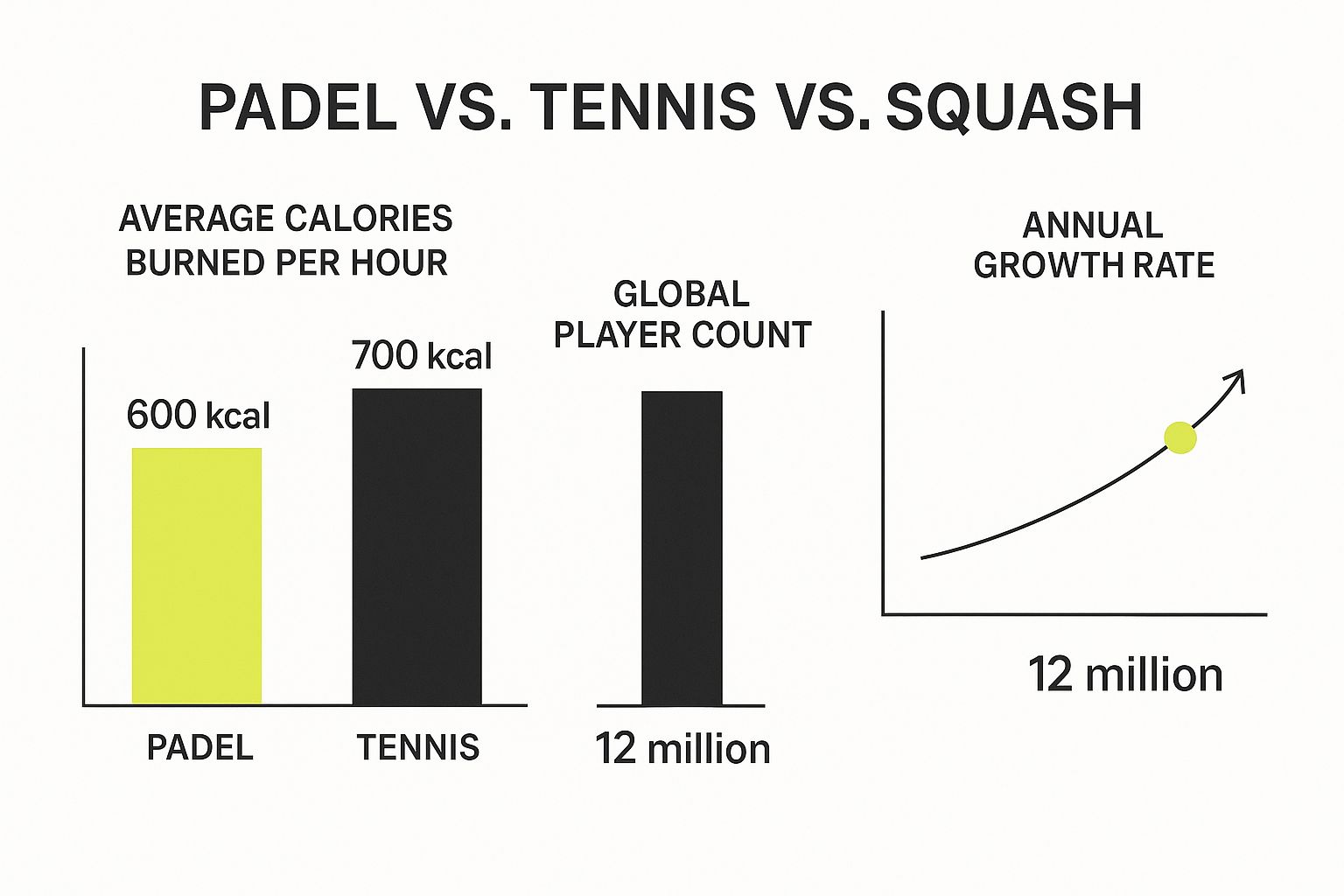
As you can see, padel's growth is off the charts, and it offers a serious workout, making it both a challenging and approachable sport for newcomers.
To give you an even clearer picture, here's a side-by-side look at the key features of each sport.
Padel vs Tennis vs Squash Compared
| Feature | Padel | Tennis | Squash |
|---|---|---|---|
| Court Size | 20m x 10m | 23.77m x 10.97m (doubles) | 9.75m x 6.4m |
| Court Type | Enclosed (glass/mesh walls) | Open court, no walls in play | Fully enclosed, all walls in play |
| Racket Type | Solid, stringless "pala" | Stringed racket | Stringed racket (long, light) |
| Ball Type | Low-compression ball | Standard tennis ball | Soft, low-bounce ball |
| Serve Style | Underhand, below the waist | Overhand | Overhand or underhand |
| Players | Almost always doubles (4 players) | Singles or doubles (2 or 4) | Singles or doubles (2 or 4) |
This table really highlights how padel borrows elements from both sports but creates its own unique identity through the court, racket, and rules.
Gameplay and Strategy Compared
Beyond the physical setup, the way you think about winning is completely different. Tennis often comes down to who has the most dominant serve and groundstrokes from the baseline. Squash is a war of attrition, all about controlling the "T" (the center of the court) and pinning your opponent with shots tight to the side walls.
Padel, however, is a game of communication and chess-like strategy, almost always played in doubles. The underhand serve alone completely changes the dynamic, taking away the "ace" mentality of tennis and starting a rally focused on finding gaps and using the walls. For a deeper dive, our complete guide on padel vs tennis breaks down every little detail, from serving to volleying.
Once you grasp these differences, you'll see why padel isn't just a trend. It's a genuinely social, strategic, and incredibly fun sport that has carved out its own global community.
The Rise of Padel as a Global Sport
Padel's journey from a niche backyard game to a professional powerhouse is a story of incredible, almost explosive growth. What was once a secret shared among a few enthusiasts in Spain and Argentina has completely captured the world's attention, becoming a legitimate and highly organized professional sport.
This didn't happen by accident. It was all driven by smart organization and a clear vision for what the sport could become. The first huge leap forward was the creation of the International Padel Federation (FIP) back in 1991. This was a game-changer. It standardized the rules and created the foundation for international tournaments, turning a bunch of scattered local games into a unified global movement.
Spain is still the heart of the padel world, with over 10,000 courts and a massive community of more than 4 million active players. But the game’s simple, accessible nature has helped it spread like wildfire into places like Sweden, France, and the UAE. If you want to dive deeper into how it all started, canobbio.com has a great breakdown of its historical milestones.
The Professional Circuit Comes to Life
The true sign of any modern global sport is a pro tour that gets fans excited and pulls in big-name sponsors. Padel has absolutely nailed this. We now have premier tournaments that showcase the world’s best talent on a weekly basis.
Professional circuits like Premier Padel, which is backed by major global investors and sports organizations, have taken the game to a whole new level. These tours offer serious prize money, are broadcast all over the world, and are turning the top players into global superstars. It’s a thriving professional scene.
Padel’s appeal to a wide audience is just undeniable. It's not just a sport to play; it's a sport to watch. The fast-paced, dynamic rallies and the unbelievable skill of the pros make it incredibly engaging and perfect for TV and social media, which is why spectators and major brands are flocking to it.
New Frontiers and Future Growth
While Europe and Latin America are the established strongholds, padel is now making exciting moves into new, high-potential markets. We're seeing a huge surge of interest in the United States and across the Middle East, with new courts and clubs opening at an incredible pace.
This rapid expansion is fueled by a few key things that make padel a perfect fit for today's world:
- Community-Focused: Padel clubs are natural social hubs. They build a sense of community that goes way beyond just playing the game.
- Media-Friendly Format: The enclosed glass court and constant action are perfect for TV and online streaming. It’s just easy for fans to follow along.
- Accessible for All Ages: It's not as physically demanding as tennis, which makes it a true lifetime sport. You'll see kids playing on one court and seniors on the next.
This perfect mix of a passionate community, a strong professional tour, and its broad appeal makes one thing clear: padel's meteoric rise isn't just a trend. It's the arrival of a truly global sport.
Got Padel Questions? We’ve Got Answers.
As you get started, a few questions are bound to pop up. Let's run through some of the most common ones we hear from new players to clear things up and get you on the court with confidence.
Is Padel Difficult to Learn?
Not at all. In fact, most people find padel much easier to pick up than tennis or squash.
The court is smaller, the serve is a friendly underhand toss, and the ball doesn't fly quite as fast. This means even total beginners can get a proper rally going in their very first session. This easy learning curve is a huge part of why the sport is exploding in popularity.
Do I Need to Be Super Fit to Play?
While the pros are incredible athletes, the social game is far less demanding than a singles match in tennis.
Since padel is a doubles game on a compact court, you're covering much less ground. This makes it a fantastic and fun activity for a huge range of ages and fitness levels.
The game leans more on quick reactions and smart strategy than pure, lung-busting endurance. How well you work with your partner is way more important than how fast you can run.
Can I Just Use My Tennis Racket?
Nope, you’ll need a specific padel racket, which is often called a "pala."
These are solid, stringless paddles riddled with holes. They're built specifically for the way a padel ball comes off the walls and the court. A tennis racket just won't work for the game and isn't allowed.
How Do I Find People to Play With?
This is the easy part. Padel clubs are incredibly social and community-driven.
Most clubs now use booking apps like Playtomic, which have built-in features to help you find open games and connect with other players at your skill level. You can also join a club's social group or even just walk up to the front desk and ask. The padel community is famous for being welcoming.
At Padel Rumors, we provide everything you need to start your journey, from beginner guides to expert gear reviews. Find news, player profiles, and your nearest court at https://padelrumors.pages.dev.


